Understanding gamification: A winning strategy for better user engagement
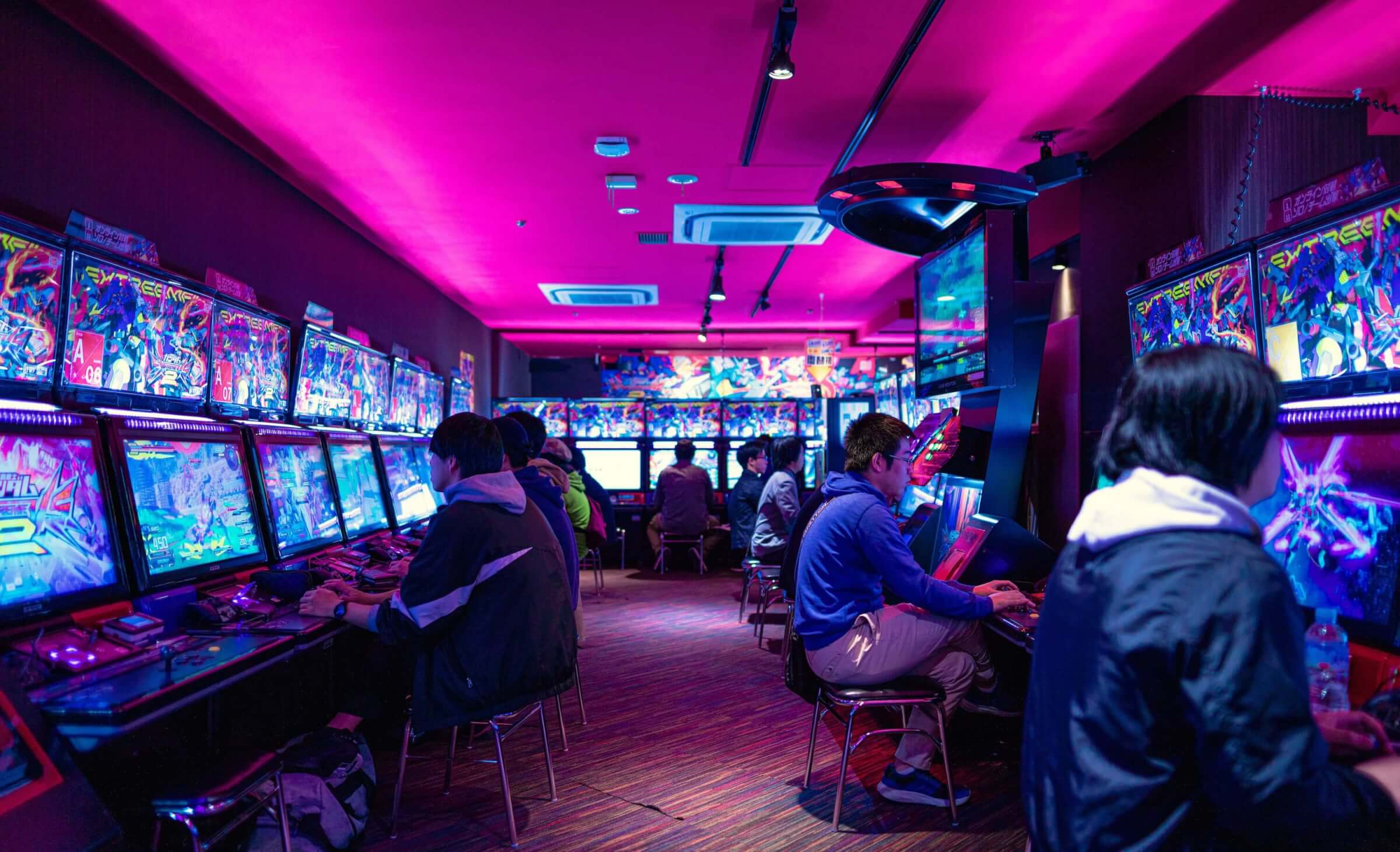
.png)

.png)
Editor's note: This article was originally published in 2018 and has been updated in April 2020 with fresh content and insights. Enjoy!
Everyone loves a good game. Heck, even the ancient Egyptians took the occasional break from building pyramids and worshiping cats to enjoy a rousing game of senet.
As games evolved into video games, they became increasingly complex—and increasingly popular. Whole vocabularies developed, “playing games” became “gaming,” conventions sprung up around the world, and app store downloads skyrocketed.
What makes video games so popular? The answer, in part, is that they're addictive.
Many games offer rewards that appear at varying intervals or only after specific tasks are completed. As a result, people keep playing in the hopes of eventually moving up a level, reaching the top of the scoreboard, or simply getting a hit of dopamine as their brain processes a pleasurable event.
Concerned parents weren't the only ones paying attention to the addictive effects of video games; product designers have also taken note. Gamification is on the rise in everything from music streaming to takeout apps as companies compete to attract and retain users.
But how do you implement gamification without going overboard and frustrating your users with gratuitous elements? Here, we look at some of the pitfalls of gamification gone wrong—and how your team can get it right.
Simply put, gamification is the incorporation of game design elements into products and marketing initiatives.
Addictive games keep users engaged by getting them to complete tasks that resonate with their goals and intrinsic motivations. Gamification applies this same strategy to non-game products by figuring out the things that trigger users to take action and rewarding them with features like point systems, badges, or even just simple progress indicators. The result is a product that motivates users and keeps them coming back for more.
Savvy marketers tapped into this approach long before digital became the default: McDonald's Monopoly, frequent flier miles, and loyalty stamp cards are all examples of early gamification strategies.
Starbucks has been using a gamified rewards program for years, allowing customers to collect points that can be exchanged for “free” food and beverages. The rewards program takes the sting out of a pricy latte and ensures that customers return to Starbucks time after time.
Starbucks' rewards system is now offered through their app. Customers can track their rewards and plan future purchases around them. And frequent customers are more likely to choose Starbucks over other options in order to maximize their rewards.
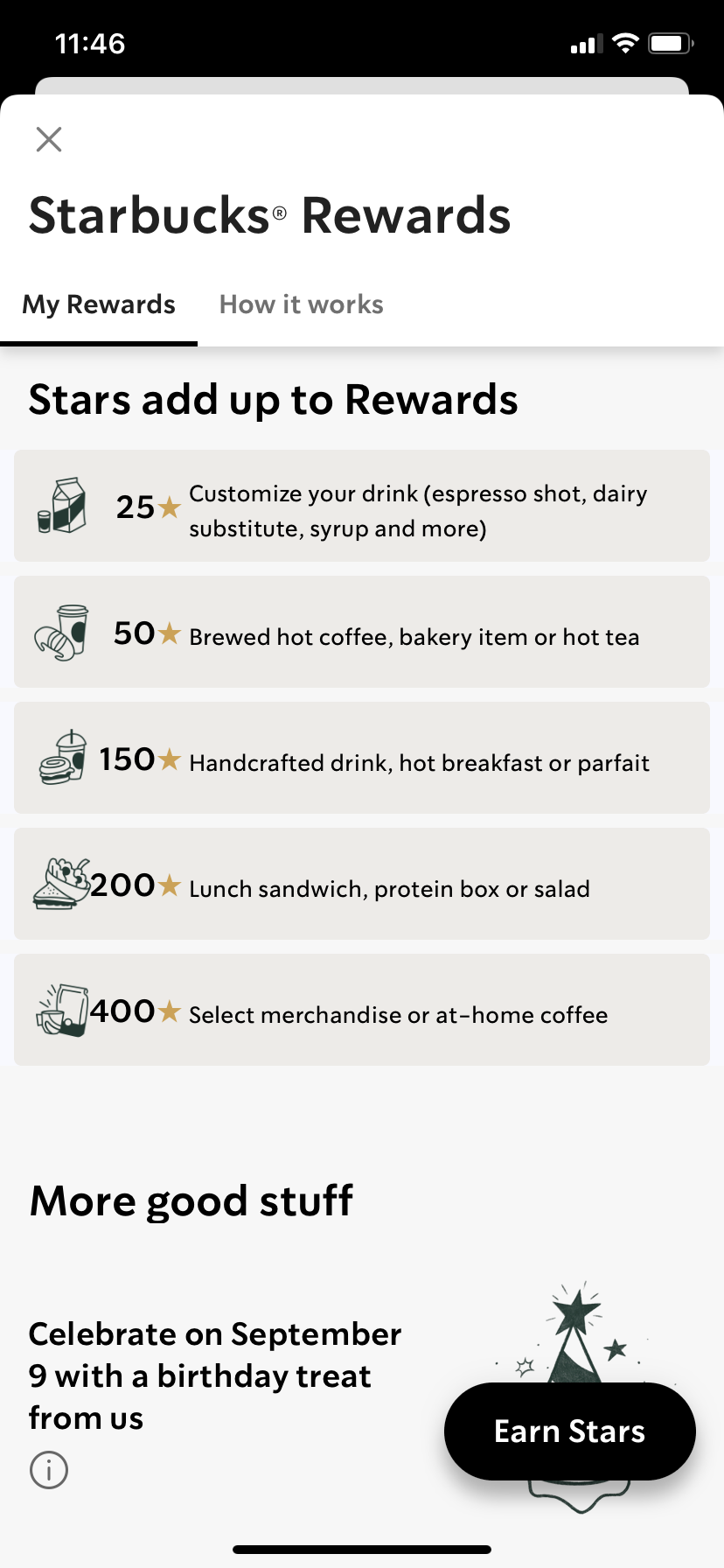
The results of their gamified approach really speak for themselves: Since being introduced in 2009, the Starbucks Rewards program has grown to over 16 million members.
Like Starbucks, you want your users to be engaged and come back to your product often. To do that, you need to:
Gamification can be a powerful strategy, but there's a delicate balance between engagement and frustration.
The hype around gamification can lead teams to think that it's an easy way to make their product stickier. But instead of focusing on their users' needs, some teams get caught up in the novelty of gaming, losing sight of the true purpose of their product.
The result is an experience that has all the obvious game elements like a simple point counter, badges, and leaderboards, but overlooks the game mechanics—the core of successful gamification—making the experience feel trivial and gimmicky.
Attempting to gamify a product without careful thought leads to visual noise that clutters the interface and distracts users from the jobs to be done.
To avoid this mistake, concentrate on how gamification can support your users as they move through your product, rather than simply entertaining them for the sake of it.
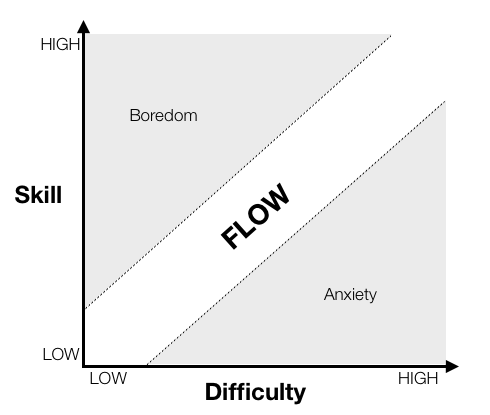
Remember that you are in the business of product design, not game design. If users feel as though your product is too game-like and doesn't add enough value, you've taken gamification too far.
The key to successful gamification is a solid understanding of your users’ motivation. Figure out what matters to your users by asking questions or tracking data; then use gamification to enhance or improve the features and functions that your users care about.
Give your users what they want, but better.
Here are 4 examples of gamified apps that figured out what motivates their users and used those findings to enhance their products and improve their user experience:
User motivation: Improve fitness and track progress.
Nike Run Club incentivizes users to complete challenges through community involvement and achievements. Users pick a challenge and track their progress against friends and other members. Milestone achievements encourage users to go the extra mile to earn badge bragging rights.
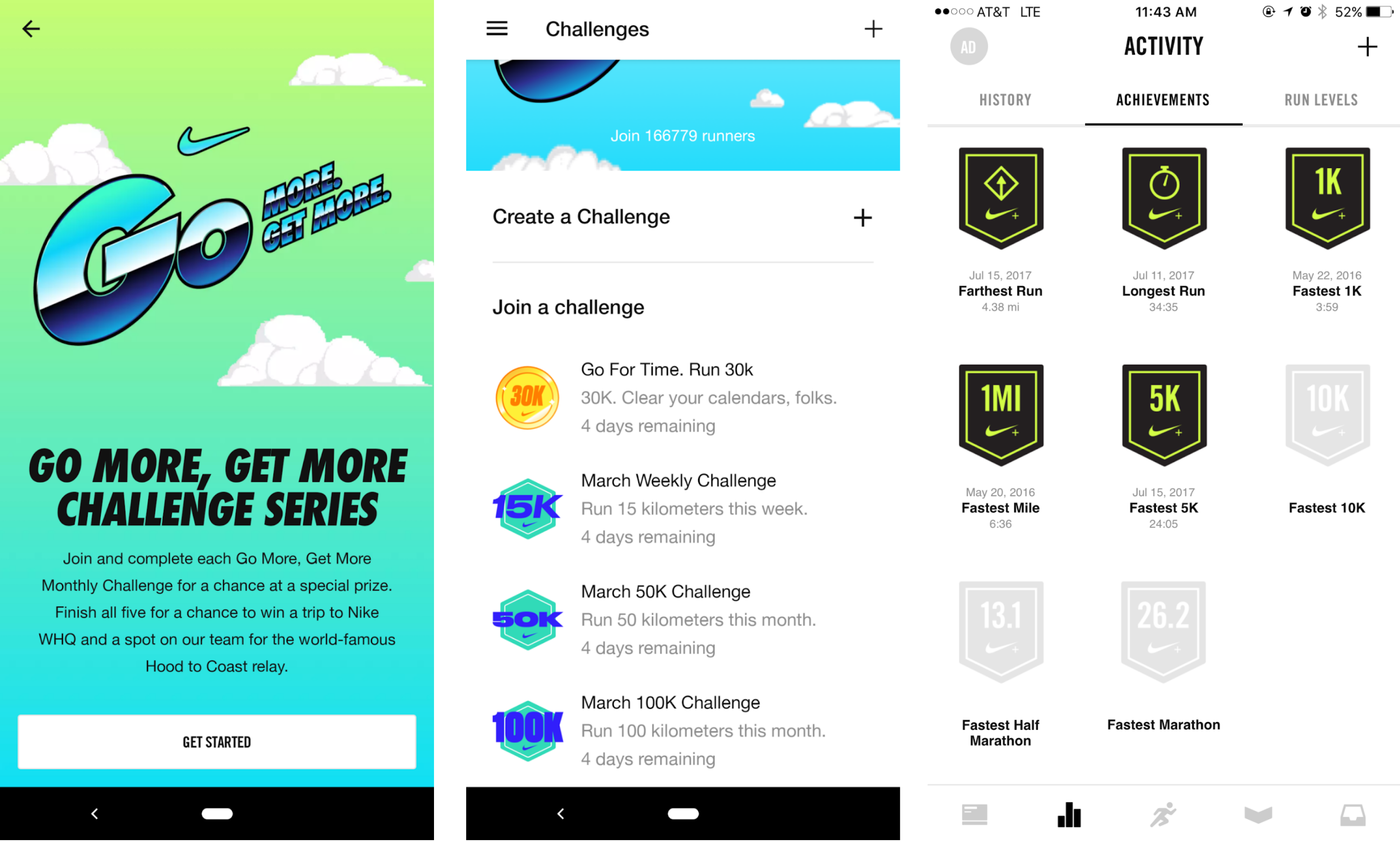
User motivation: Track workouts, build stamina, and be part of a community.
Strava users can track their workout performance and progress over time and against other users. As their times improve, users can compete against their entire city. Users can also join challenges and clubs to feel a sense of community with fellow athletes.
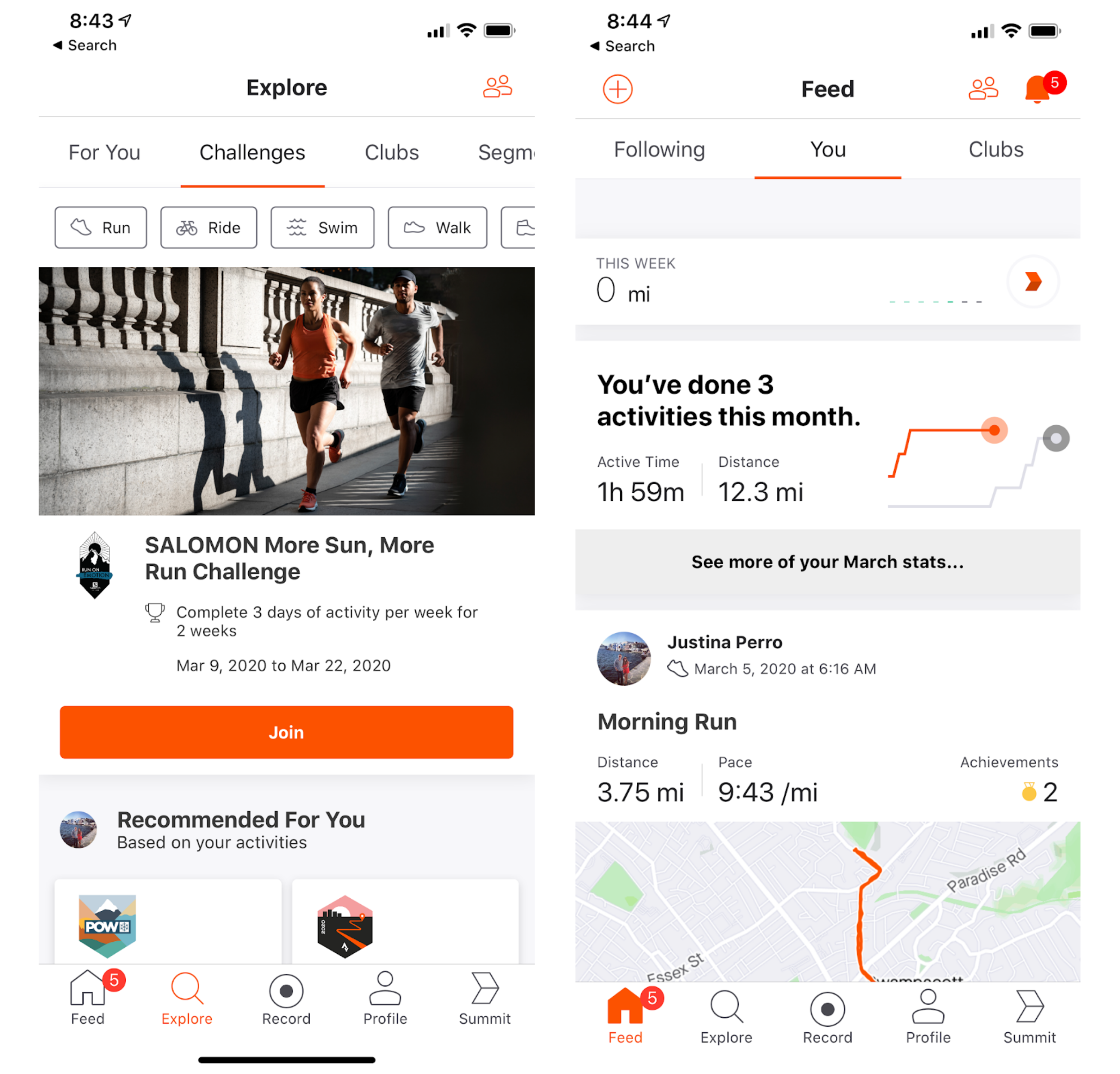
User motivation: Learn Chinese.
Hello Chinese, a language app for beginner Mandarin learners, encourages users to keep up their practice through daily goals and streaks.
Progress indicators and streaks reward users for completing lessons with a hit of dopamine, and encourage long-term engagement. Highlighting streaks and goal-achieving moments reinforces positive behavior and gives users a sense of pride in their accomplishments.
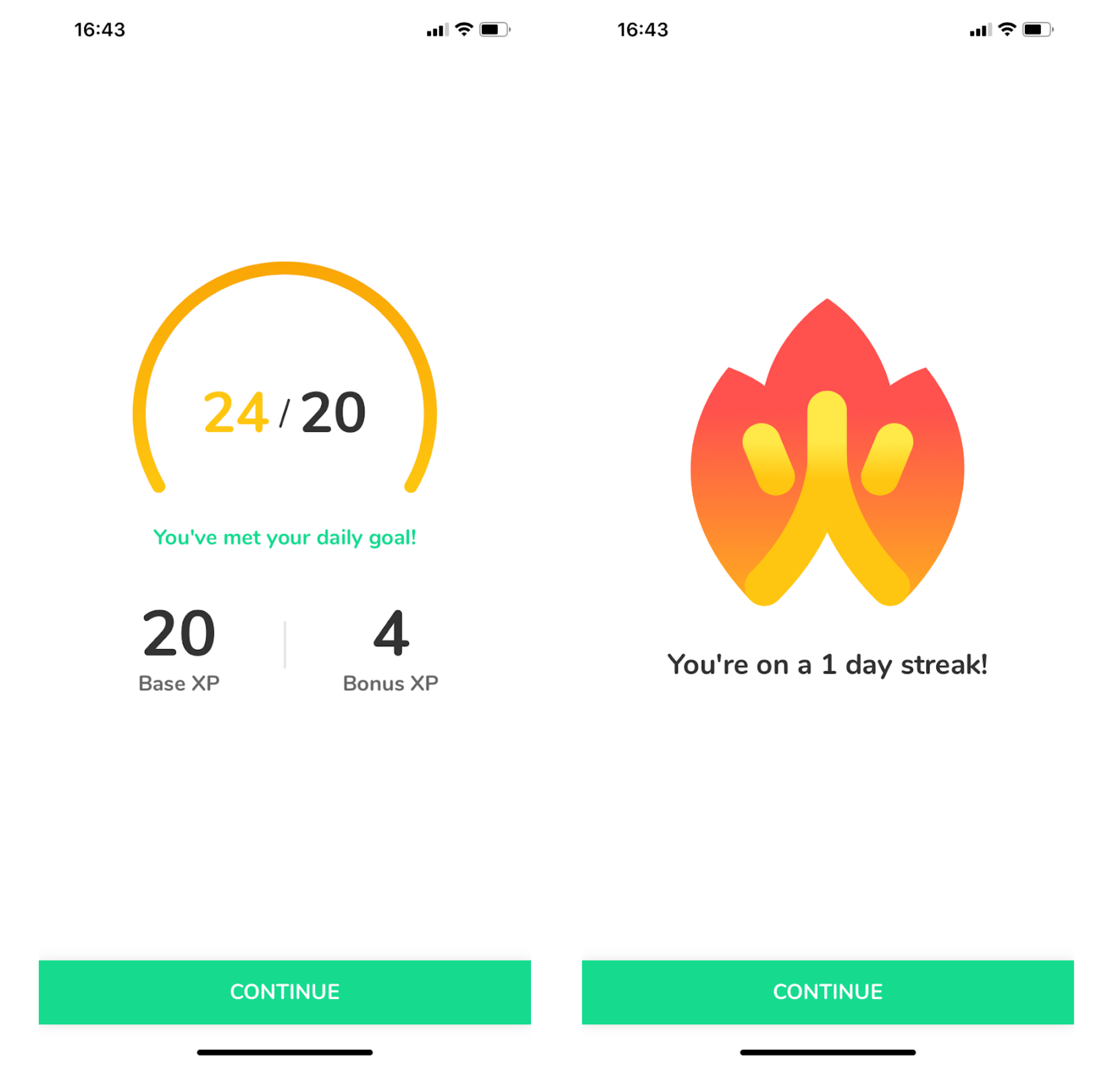
User motivation: Incorporate relaxation into their day.
Calm is a meditation app designed to help adopt habits that promote relaxation. Users can activate notifications that send them daily reminders to meditate.
For every meditation session they complete, users find themselves rewarded with positive reinforcement. For instance, when a user completes a number of sessions in a row, the app recognizes that they're on a streak and rewards them with a friendly shoutout and star. Simple rewards like this can often be just the pat on the back that users need to adopt a new habit.
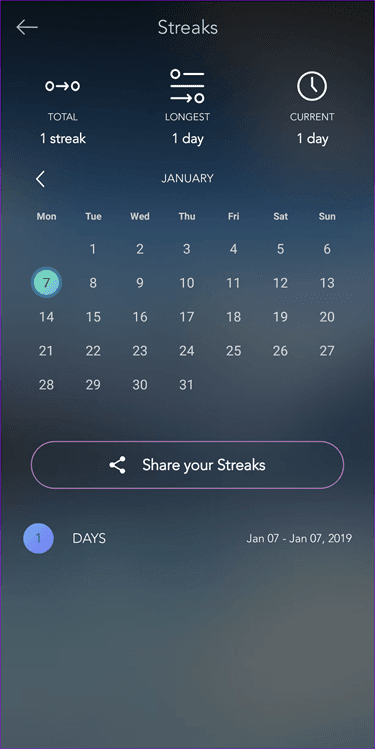
Gamification is becoming a ubiquitous part of product design. Done correctly, it can be an effective way to keep your users engaged and make accomplishing necessary tasks more enjoyable. When done poorly, gamification can be distracting and gimmicky.
Successful gamification is all about balancing your users' needs and motivations with their desire to be entertained.
Figure out what motivates your users, identify the necessary tasks within your product, and use gamification to inspire users to complete those objectives. And always keep UX best practices at the front of your mind:
Don't feel as though you have to stick to one formula just because other products in your vertical offer something similar. Try something new, experiment, and listen to user feedback. With trial—and perhaps a little error—you'll figure out the right amount of gamification for your product.